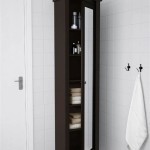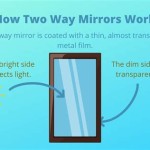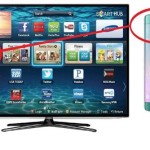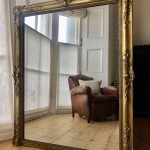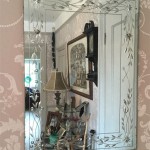Commercial Restroom Mirrors: Functionality, Design and Compliance
Commercial restroom mirrors are essential components of any public or private facility, serving practical purposes while contributing significantly to the overall ambiance and user experience. The selection of appropriate restroom mirrors requires careful consideration of factors such as functionality, aesthetics, safety, durability, and compliance with accessibility regulations. This article will discuss the various aspects of commercial restroom mirrors, exploring their types, features, installation considerations, and relevant standards. This understanding is vital for facility managers, architects, and designers tasked with creating functional and welcoming restroom environments.
Mirrors in commercial restrooms offer more than just a reflective surface. They allow individuals to perform necessary grooming tasks, check their appearance, and enhance the perceived spaciousness and brightness of the room. A well-chosen mirror can improve the overall satisfaction of restroom users, positively impacting their perception of the facility and the business it represents. Conversely, poorly maintained or improperly selected mirrors can detract from the user experience and create a negative impression.
The considerations for choosing restroom mirrors extend beyond simple selection. It involves understanding the specific needs of the user population, the intended aesthetic of the restroom, and the practical requirements of the space. This detailed approach ensures that the chosen mirrors are not only functional but also contribute to a positive and inclusive restroom environment.
Mirror Types and Materials
Commercial restroom mirrors are available in a wide variety of types, each offering distinct advantages and disadvantages. Sheet glass mirrors are the most common and economical option, consisting of a thin sheet of glass with a reflective coating applied to the back. These mirrors are generally suitable for standard applications and are available in various sizes and thicknesses.
Tempered glass mirrors are a more durable and safer alternative. Tempered glass undergoes a heat-treating process that makes it significantly stronger than standard glass, and if broken, it shatters into small, relatively harmless fragments instead of sharp shards. This makes tempered glass mirrors a preferred choice in high-traffic areas or where safety is a primary concern.
Acrylic mirrors, also known as Plexiglas mirrors, are lightweight and shatter-resistant, making them a good option for applications where weight or safety are critical factors. They are also more resistant to scratching than standard glass mirrors. However, acrylic mirrors can have a slightly distorted reflection compared to glass mirrors and may be more susceptible to damage from certain cleaning agents.
Stainless steel mirrors offer exceptional durability and are virtually unbreakable. They are ideal for high-vandalism environments or areas where hygiene is paramount, as they are easy to clean and resistant to bacteria. Stainless steel mirrors have a unique, slightly diffused reflection, which may not be suitable for all applications; however, their robust nature is often a priority.
Beyond the core material, the type of mounting also contributes to the overall mirror type. Framed mirrors offer a decorative element and can be integrated into the overall restroom design. Frameless mirrors provide a clean, modern look, and allow for a seamless transition to the surrounding wall surface. Tilting mirrors, often found in accessible restrooms, are adjustable to accommodate users of different heights.
Features and Functionality Enhancements
Beyond the basic reflective surface, modern commercial restroom mirrors can incorporate a range of features designed to enhance functionality and user experience. One increasingly popular feature is integrated lighting. Mirrors with built-in LED lighting provide even and consistent illumination, which can improve visibility for grooming tasks and create a more inviting atmosphere. These options can also be more energy-efficient than traditional overhead lighting.
Anti-fog features are another desirable enhancement, particularly in restrooms with high humidity levels. These features typically use a heating element to prevent condensation from forming on the mirror surface, ensuring a clear reflection even after a hot shower or bath. This reduces maintenance efforts and improves user satisfaction.
Some commercial restroom mirrors incorporate touchless technology, such as infrared sensors for activating lighting or displaying information. This enhances hygiene and reduces the risk of cross-contamination, particularly in restrooms with high traffic volume. These features also contribute to a more modern and technologically advanced restroom experience.
Mirrors with integrated shelving or storage are particularly useful in smaller restrooms where space is limited. These features provide a convenient place for users to store personal items while they are using the restroom, helping to keep the space tidy and organized. The addition of storage also reduces clutter and minimizes the risk of items being left behind.
Furthermore, options exist with embedded digital displays. These displays can provide information, advertisement, or even directional guidance. While requiring a more substantial investment, these digital mirrors offer a unique opportunity for communication and enhanced functionality within the restroom environment.
Installation Considerations and Compliance
Proper installation is crucial for ensuring the safety, functionality, and longevity of commercial restroom mirrors. The installation process should be performed by qualified professionals who are familiar with the specific requirements of the chosen mirror type and the surrounding wall structure. Incorrect installation can lead to damage to the mirror, the wall, or even injury to users.
The mounting height of restroom mirrors is a critical consideration, particularly in accessible restrooms. The Americans with Disabilities Act (ADA) mandates specific requirements for the mounting height of mirrors to ensure that they are usable by individuals with disabilities. These requirements specify the maximum height of the bottom edge of the reflective surface, allowing users in wheelchairs to view themselves comfortably.
In addition to mounting height, the positioning of mirrors relative to other fixtures and accessories in the restroom is also important. Mirrors should be placed in locations that provide adequate visibility without obstructing access to sinks, toilets, or other essential amenities. Proper planning and consideration of traffic flow can help to ensure that mirrors are positioned effectively and safely.
When selecting and installing commercial restroom mirrors, it is essential to comply with all applicable building codes and regulations. These codes may specify requirements for mirror thickness, safety glass standards, and other aspects of mirror construction and installation. Compliance with these regulations helps to ensure the safety and well-being of restroom users and avoids potential legal issues.
Regular maintenance is also critical for maintaining the appearance and functionality of commercial restroom mirrors. Mirrors should be cleaned regularly with appropriate cleaning agents to remove smudges, fingerprints, and other debris. Damaged or broken mirrors should be replaced promptly to prevent injury and maintain the overall aesthetic of the restroom. A proactive maintenance program can significantly extend the life of restroom mirrors and ensure that they continue to provide a positive user experience.
Accessibility guidelines such as the ADA require that at least one mirror in each accessible restroom be mounted with the bottom edge of the reflecting surface no higher than 40 inches above the finished floor. This regulation ensures that individuals in wheelchairs can adequately utilize the mirror. Understanding and adhering to these guidelines is crucial for compliance and creating inclusive restroom facilities.
Finally, consider the environmental impact when choosing mirrors. Opt for mirrors manufactured with eco-friendly processes and materials. This includes exploring options like lead-free mirrors or those using recycled glass. Choosing sustainable options contributes to environmentally responsible building practices and aligns with broader sustainability goals.

Commercial Mirrors Arizona Glass Door Connection

Commercial Bathroom Mirrors Decor Ideas Mirror Designs Design Small

The Impacts Of Mirror Size Type In Commercial S

Commercial Restroom Mirrors Aligning Size And Type

Small Commercial Bathroom Design Guide 10 Spec

Traditional Commercial Restroom With Framed Mirrors Bathroom Redecorating Design Remodel

Commercial Bathroom Mirror Traditional Vs Low Iron Copper Free

Public Bathroom Mirror Images Browse 4 122 Stock Photos Vectors And Adobe

Led Lighted Bathroom Mirrors Smart Tv Electric Mirror

Alamo Glass Mirror Top Choice In Dallas Tx

